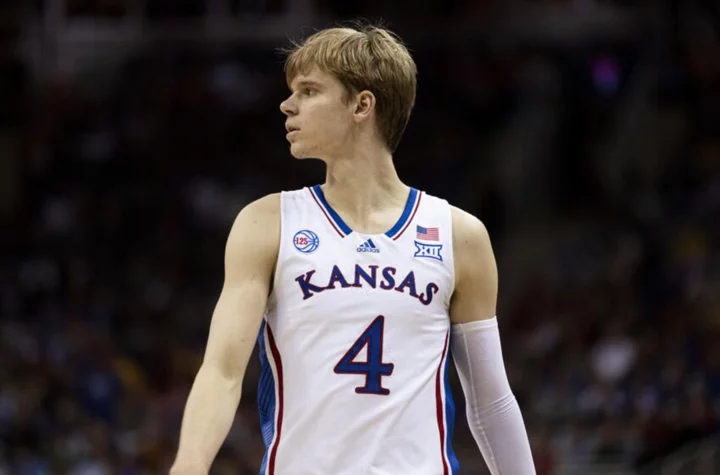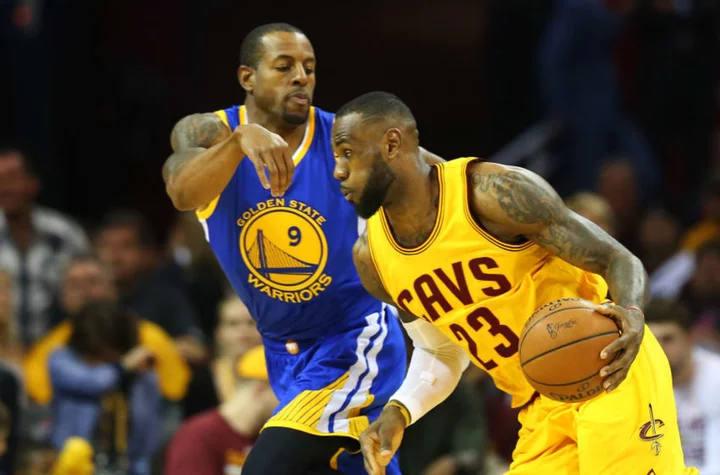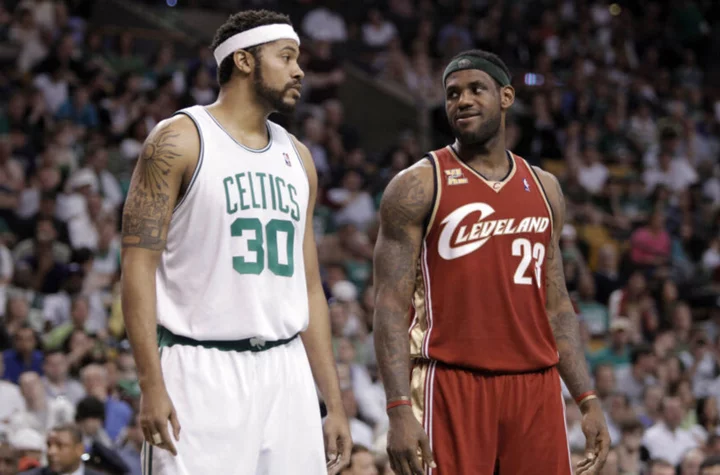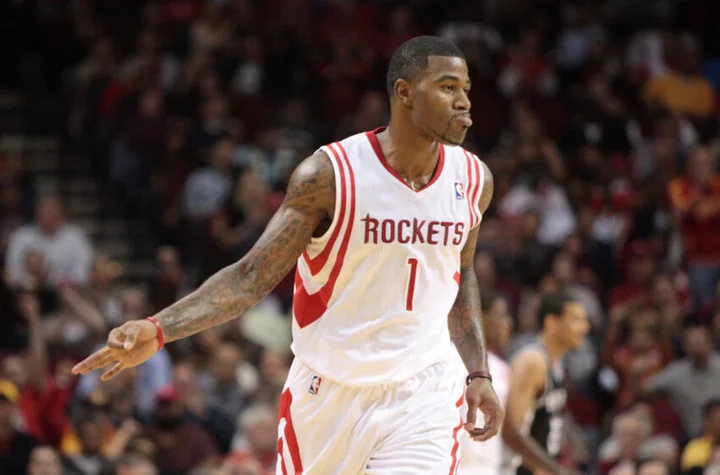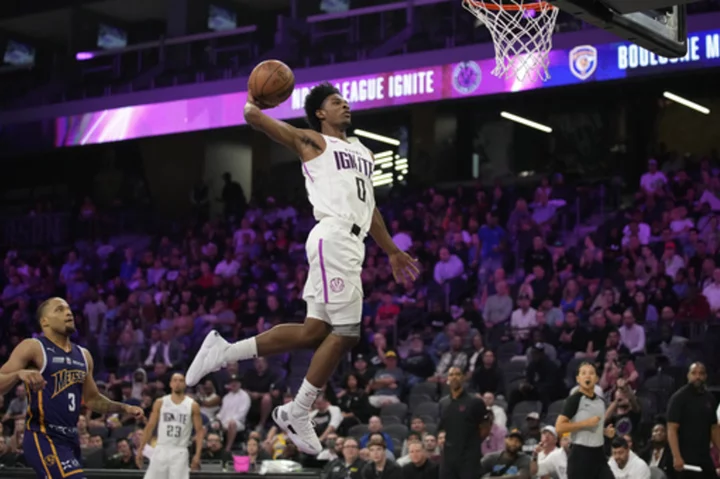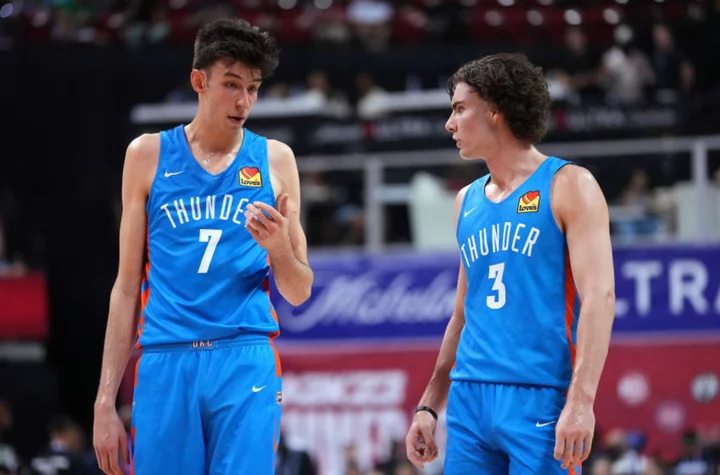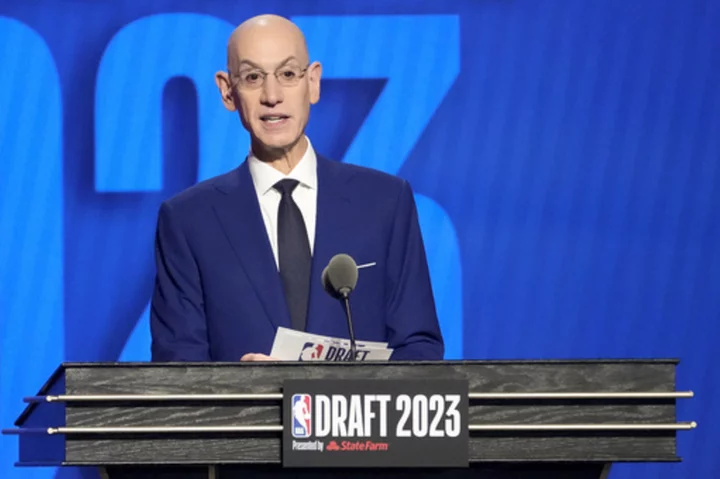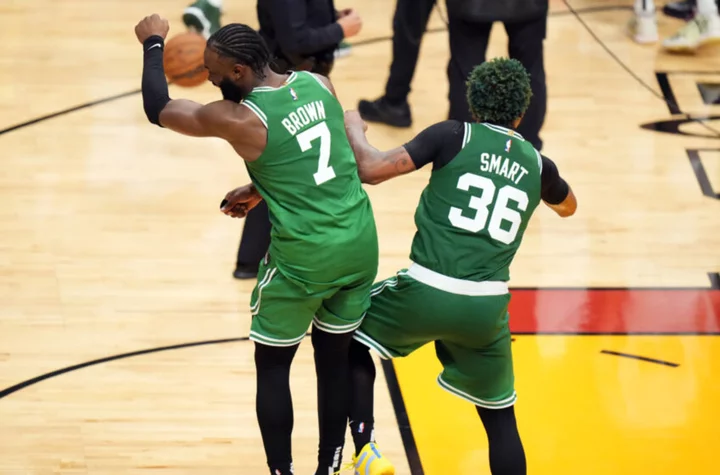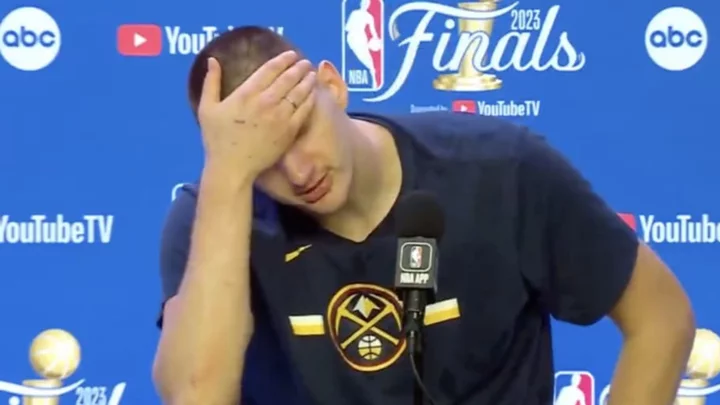Over the next month, you're going to hear a lot of NBA Draft prospect comparisons — some good, some absolutely disastrous.
With the lottery behind us, NBA Draft season is upon us in earnest. That means it's time to start breaking out the NBA Draft prospect comparisons.
These kinds of comparisons can be incredibly useful, a sort of shorthand for compressing and communicating a lot of information about a player at once. But they're much more valuable as a starting point, a place to begin examining what a player is or could be at the next level. They are also prone to some common fallacies, which I tried to highlight below.
Not wanting to put anyone on blast, I won't link to the sources for any of these comparisons, but I found them all in 10-15 minutes of Googling and anyone else similarily motivated should be able to find them as well. In each case, I tried to highlight why the comparison is flawed and what essential information is missing or being overlooked.
Irresponsible NBA Draft prospect comparisons: 5. Taylor Hendricks is not Pascal Siakam
One of the things that can get messy with NBA Draft prospect comparisons is trying to suss out whether the prospect is being compared to the pro player as they are now, after several years of development, or compared to who they were as a prospect when they entered the draft. In either case, the Hendricks to Siakam comparison falls apart. They might have similar builds and some athletic overlap but the roles and skills don't line up, then or now.
Hendricks is a fantastic, switchable defender but he especially shines as a weakside rim protector — something that certainly isn't true for Siakam now and wasn't really his primary strength leaving college. But offense is where this really falls apart. In college, Siakam was an energy big, scoring points by crashing the glass, running the floor, overpowering small bigs and attacking large players in face-ups. He attempted just 17 3-pointers in two seasons at New Mexico State and while he's become a reasonably reliable outside shooter with the Raptors, his primary offensive role is as a slasher and self-creator.
Hendricks is very underdeveloped as a creator and slasher, although he has the athleticism to perhaps grow into that role. But he's already an elite spot-up shooter, hitting 39.4 percent of his 3-pointers with nearly half his shot attempts coming from beyond the arc. He's a shooter and shot-blocker whose upside is mostly in growing defensive versatility.
Irresponsible NBA Draft prospect comparisons: 4. Gradey Dick is not Gordon Hayward
Another common trap with NBA Draft prospect comparisons is leaning too heavily on meaningless factors like alma maters, height, skin color and physical similarity. It's why so many versatile white wings get compared to Larry Bird, not matter how absurd those comps are. It's also why you may see Gradey Dick compared to Gordon Hayward — two 6-foot-8ish wings with surprising athleticism and similar complexions.
Dick, however, is entering the draft as one of the best shooters in this class — an elite jumpshooter who is comfortable spotting up, relocating in transition and running off screens. Hayward, on the other hand, made just 29.4 percent of his 3-pointers during his final year in college, averaging about two fewer 3-point attempts per 36 minutes.
Both players leverage their size and athleticism to create advantages, but Dick is entering the NBA as an established shooter with room to develop as an on-ball creator. Hayward was the reverse, stepping up early in his career as an ancillary creator and then growing into an off-ball shooter role as well.
There may be some convergence — if Dick develops he could end up being very similar to what a healthy Hayward contributed at the end of his Utah stint or in Boston. But he and Hayward would be starting from different places trying to land in the same spot.
Irresponsible NBA Draft prospect comparisons: 3. Trayce Jackson-Davis is not 'Jerami Grant with less shooting'
Another common mistake with NBA Draft prospect comparisons is adding a modifier — "they are like Player X but with or without Skill Y." In most cases, it's more instructive to just find a player who is a better match, rather than starting with a template and then taking and removing defining characteristics like a paper doll.
Trayce Jackson-Davis is ranked as a second-round prospect on most draft boards. He is clearly not an outside shooter, having attempted just three shots from beyond the arc across his four-year college career. So this comparison at least gets that point right. But I'm not sure the base comparison is meaningful enough to be useful.
At this point in his career, Grant is a slasher and shooter on offense. Removing one of his key attributes in the comparison makes it more irrelevant, especially when slashing doesn't project to be a big part of Jackson-Davis' game. On defense, Grant played in Syracuse's zone in college and has become a versatile big win in the NBA, defending mostly 3s and 4s.
Jackson-Davis is bouncy and mobile but he's also listed as roughly 35 points heavier than Grant. A significant portion of his college offense came from the low-post or mid-post face-ups. He is a lob threat and an interior force. He is not a slasher. And on defense, despite being bouncy and athletic, he seems far more likely to defend 4s and 5s at the next level than 3s and 4s like Grant. The only thing that really feels like a match here is non-shooting and some measure of athleticism. But if we're not learning anything about the role they play now or will play later, what's the point of the comparison?
Irresponsible NBA Draft prospect comparisons: 2. Emoni Bates is not Carmelo Anthony
Another common problem with NBA Draft prospect comparisons is honing in on one or two attributed to the exclusion of several other far more dramatic and far more important differences. In this case, we have two players who have no fear of a contested jumpshot, who are comfortable isolating, facing up and shooting over the defense. But for a number of other reasons, this doesn't matter at all.
For one thing, Carmelo Anthony was a BULLY, even as a freshman at Syracuse. He was quick and explosive but that was all incredibly effective because he was so strong and so powerful. Bates, meanwhile, is reed-thin and looks like a stiff breeze could knock him off his position on the low block. Anthony had a force to his low- and mid-post game that made him immediately effective as a scorer, something Bates can't replicate.
And then there is the matter of success. Anthony averaged 22.2 points, 10.0 rebounds and 2.2 assists and led his team to a national championship. Bates washed out at Memphis and transferred to Eastern Michigan where he put up hugely impressive numbers (32.4 points, 9.7 rebounds, 2.4 assists) but for an 8-23 team that played the 189th-toughest schedule in the nation, per KenPom. These two things are not the same.
Irresponsible NBA Draft prospect comparisons: 1. Jarace Walker is not Tim Thomas
I'm not sure this NBA Draft prospect comparison can fit neatly into any of the categories we've talked about above because it falls apart on a number of fronts. Walker's profile is of a unique defensive prospect, someone with the size and strength to bang with bigs but the quickness and mobility to switch out on players much smaller. What pops most in looking at his profile is motor, defensive awareness and physical tools.
Tim Thomas was long and mobile but not explosive in nearly the same way and nowhere near as strong or powerful as Walker. He was a decent defender and blocked some shots; he also played in a different era where defensive responsibilities for a non-center were perhaps simpler and more well-defined. But he was never, at any point, before or during his team in the NBA seen as a foundational defensive piece like Walker.
And then there is the shooting. Thomas attempted more 3-pointers than Walker, and in an era where bigs shooting 3s was still a relatively fresh idea. But things only took off from there. From his fourth season in the NBA to the end of his career, Thomas made 37.3 percent of his 3s and more than 35 percent of his shots came from beyond the arc — topping out at 49.2 percent in 2006-07 with the Clippers. Walker may develop as a shooter but comparing him to a player for whom the 3-pointer became the defining feature of their offensive game feels way off base.
Check out The Step Back for more news, analysis, opinion and unique basketball coverage. Don't forget to follow us on Twitter and Instagram and subscribe to our daily email newsletter, The Whiteboard.

